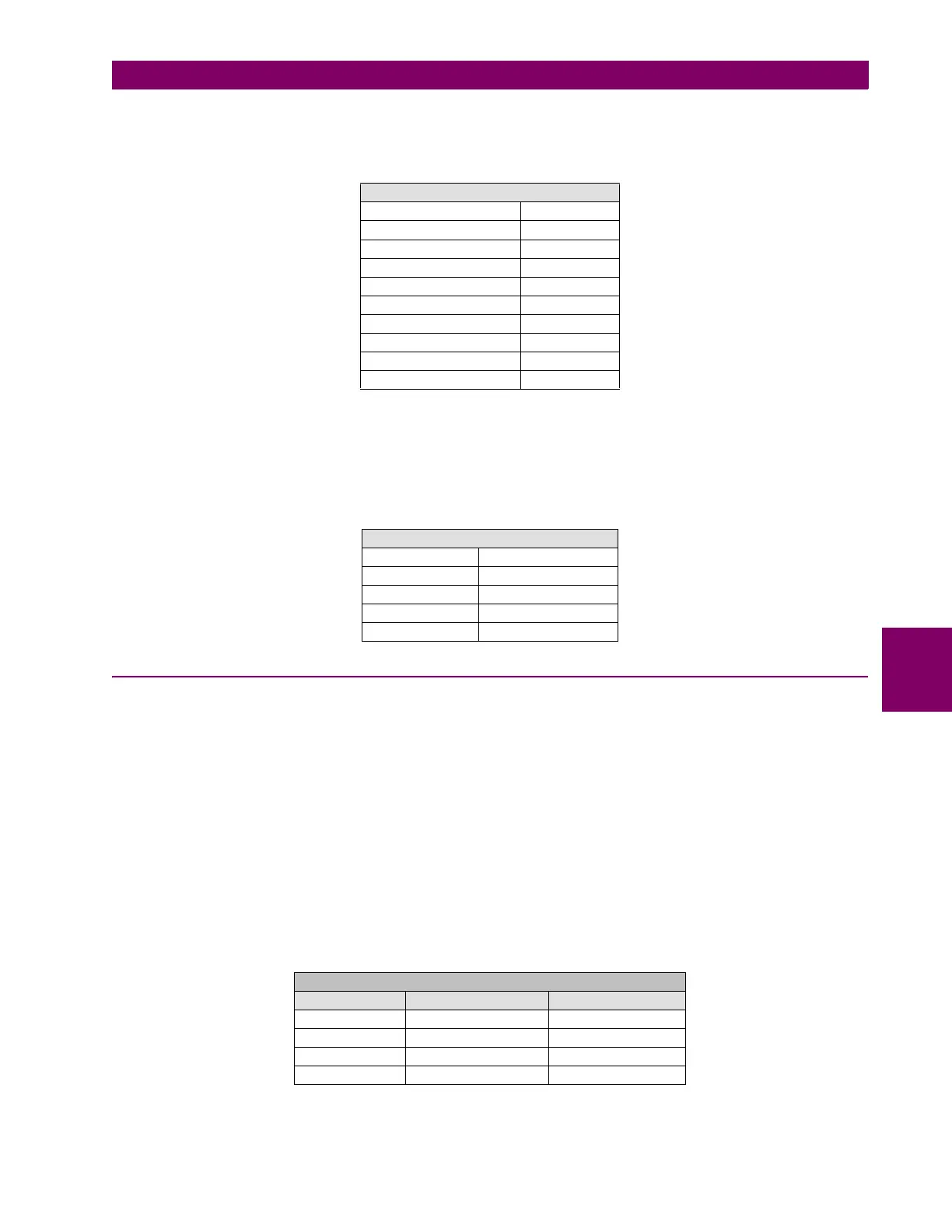GEK-113000T F650 Digital Bay Controller 6-23
6 COMMISSIONING 6.16 RECLOSER (79)
6
6.16 RECLOSER (79)
Set protection element 79 as follows:
Set the relay to trip by 50PH, and configure the signals necessary to test the 79 element:
Configure one output as AR RECLOSE
Configure the AR INITIATE signal with the 50PH trip
Configure the AR LEVEL BLOCK signal with a digital input
Configure the AR CONDS INPUT with the digital signal desired
6.16.1 RECLOSING CYCLE
Connect a latching relay simulating the breaker managed by the F650 unit.
Once the relay is set, close the breaker and wait for 5 seconds.
After this time, the recloser is ready to initiate the reclosing cycle.
Command a 50PH trip and verify that the breaker opens and the relay recloses in 2.1 seconds.
Command a 50PH trip and verify that the breaker opens and the relay recloses in 4.1 seconds.
Command a 50PH trip and verify that the breaker opens and the relay recloses in 6.1 seconds.
Command a 50PH trip and verify that the breaker opens and the relay recloses in 8.1 seconds.
Command a 50PH trip and verify that the breaker opens and the recloser passes to Lockout.
Verify the correct operation of programmed outputs
Tripping times must be within the following values:
RECLOSER
Function ENABLED
Max Number Shots 4
Dead Time 1 2.10 sec
Dead Time 2 4.10 sec
Dead Time 3 6.10 sec
Dead Time 4 8.10 sec
Reclaim Time 3.00 sec
Cond. Permission ENABLED
Hold Time 7.00 sec
Reset Time 5.00 sec
50PH SETTINGS
Function ENABLED
Input RMS
Pickup Level 3 A
Trip Delay 0.00 s
Reset Delay 0.00 s
RECLOSING CYCLE
Nº shot Expected time Admissible time
1 2.1 sec [1.8 – 2.3]
2 4.1 sec [3.8 – 4.3]
3 6.1 sec [5.8 – 6.3]
4 8.1 sec [7.8 – 8.3]

